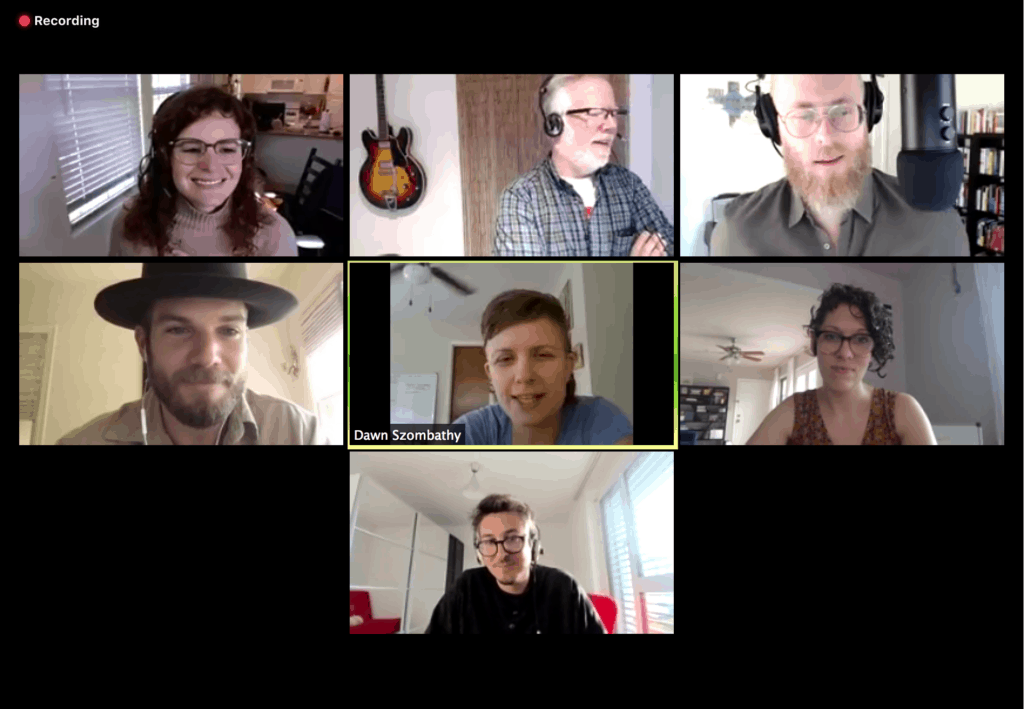Must-dos to lead more productive remote meetings
How are your virtual meetings going? If there’s room for improvement, we are here to help. Adjusting to the virtual landscape can be a doozy if you don’t have the correct tools and processes–especially if remote work is new to your business dynamic. But you can have productive and effective remote meetings with properly executed virtual facilitation. The following five virtual facilitation strategies are high-level ways to encourage remote team engagement, provide optimal support for attendees, and achieve meaningful results.
1. Turn on your camera
Encourage all meeting attendees to use their cameras. Collaborating virtually already threatens team connection; it’s simply not the same dynamic as being together in the same physical space. You lose the necessary human connection imperative to having meaningful meetings when your team can’t see each other’s faces. When you do not enforce the use of video, you are inviting participants to multi-task with non-related material and you’ll lose their attention.
Partial attention does not foster productive meetings, it fuels unproductive ones.


2. Learn by doing
The best teacher is experience. Make your meetings interactive. This will not only keep people engaged, but it will also help with retention and a sense of ownership. Use a collaborative virtual space like MURAL–a virtual whiteboard tool–or simply use Google Docs to allow team members to engage and work together in real-time. Sitting and staring at a screen, while someone talks at you, is not nearly as enticing and inspiring as getting your hands dirty. You should do the work in the meeting, not after, to achieve the best outcome. Make meetings productive working sessions by getting the entire team involved. This will help you attain meaningful results.

Pro tip: Assign a scribe to document important meeting notes, capture room intelligence, and synthesize information during the meeting. It is helpful to have a designated person focused on recording big themes and takeaways.
3. Piecemeal information
To uphold optimum productivity during virtual meetings, be wary of inflicting cognitive overload on attendees. The virtual landscape is a new frontier. Therefore, you need a new process of facilitation that best serves team members in a virtual space. Develop a process that makes it easy to instruct attendees and give them what they need to succeed.
It takes much more intentional prep-work to run successful virtual meetings.
For example, if you’re giving instructions to the group, provide it verbally on video as well as visually in the video platform’s chatbox. Sometimes information goes over peoples’ heads, especially with the many outside distractions that come with remote work. Provide instructions in various ways incrementally, rather than all at once, to help ensure all attendees retain them and follow them correctly.

4. Provide necessary support
A key component of virtual facilitation is helping attendees understand technicalities specific to the tools you are using. Make sure everyone understands how to use the features of the video conference platform you are meeting on and any other tools they will need.
Pro tip: send all attendees a list of the tools they will need and how to use them along with a meeting agenda before the meeting so they know what to expect. You can also designate some time at the beginning of the meeting to explain the tools, how they work, and answer any questions. When everyone is on the same page, the meeting will run smoothly.

If you are using breakout rooms in your meeting, it is helpful to have a facilitator in each breakout room to answer any questions that may arise. If this isn’t possible, make sure to give team members instructions on how to use the help button in the breakout room. Just like a flight attendant call light in an airplane, the facilitator will be notified they are needed in the room when the button is pushed.
5. Use the “raise hand” feature
Have you been in a virtual meeting and felt like you couldn’t get a word in? It can be tough to know when to contribute and how to do so respectfully in a virtual space. The “raise hand” feature in Zoom is a great tool to surpass this roadblock. Ask people to use the button when they want to be called on. It is a clear indicator of desired speaking space and it prevents multiple people from talking at once. You don’t want anyone to feel overlooked or that their opinion doesn’t matter. The “raise hand” feature is a simple yet powerful way to ensure voices do not go unheard.

Meetings matter, make each one count. Add these five strategies to your virtual facilitation tool belt to have more purposeful remote meetings. And check out our Virtual Work Guide for more remote work tools and guidance for fruitful meetings.
Want to learn more about virtual facilitation?
Voltage Control offers virtual services including Virtual Facilitation, Virtual Transitions, and Virtual Meeting Design. Please reach out at hello@voltagecontrol.com for a consultation.


